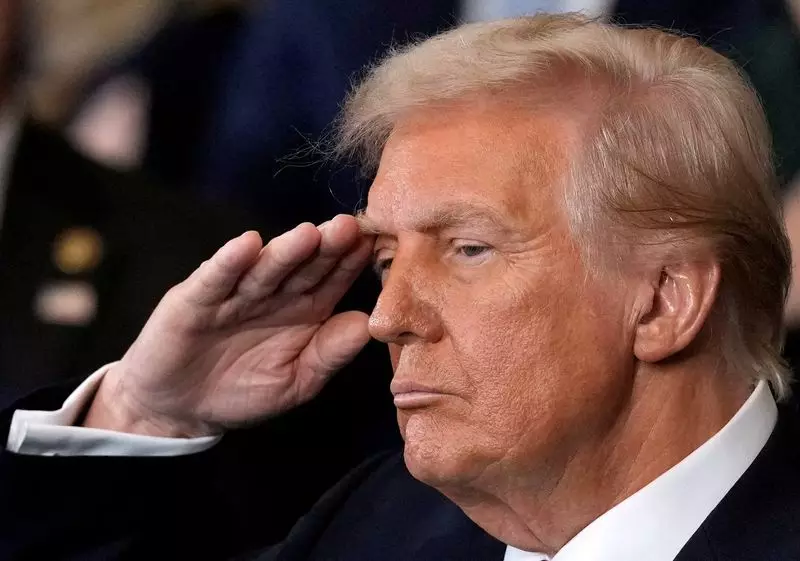In a significant pivot from the long-held expectation of immediate tariff implementation upon taking office, President Donald Trump announced a strategic approach to trade policies through a memo that refrains from immediate tariff impositions. Instead, he has tasked federal agencies with a thorough assessment of the United States’ trade relationships with not only China, but also Canada and Mexico. This decision, as per administration officials, came after extensive speculation surrounding the potential tariffs that Trump may enforce. The announcement was taken positively by global markets, leading to a rally in stock prices and a weakening of the dollar against several other major currencies.
This cautious but deliberate pivot suggests a shift in tone from Trump’s frequently aggressive campaign rhetoric. While his inaugural address contained no explicit plans for new tariffs, he reaffirmed his commitment to revamping the U.S. trade system aimed at bolstering the country’s manufacturing base. He expressed a vision where foreign entities would bear the financial burdens through tariffs, thereby enhancing American economic welfare.
Stakes of Trade Relations
Trump’s campaign made explicit promises to impose substantial tariffs aimed at reducing the staggering trade deficit, which hovers around the trillion-dollar mark annually. These proposed tariffs would include a significant increase on imports, particularly targeting China with potential rates between 10% to 60%. Furthermore, his threats of a 25% import surcharge on goods from Canada and Mexico hinged on those countries’ cooperation in curbing illegal drug trafficking and immigration. Analysts are aware of the potential turmoil this could introduce into established supply chains, as well as the increased costs for consumers.
Although the new trade memo outlines a less forceful start to Trump’s administration, it is clear that aggressive evaluations of trade deficits and unfair practices remain crucial to his agenda. The memo instructs agencies to investigate China’s adherence to its trade agreements as well as scrutinize the U.S.-Mexico-Canada Agreement, indicating that there might be substantive reviews before any definitive action is taken.
The reaction in global financial markets was immediate; the dollar experienced a noticeable decline against other major currencies, such as the euro and the yuan, while stock indices recorded gains as investor fears lessened. The absence of immediate tariffs seemed to calm investors worried about potential trade wars escalating from hasty policy decisions. Analysts had anticipated a possible invocation of the International Emergency Economic Powers Act, a law that provides broad authority to manage imports during national emergencies, but the memo appears to suggest a more calculated trajectory.
The speculation surrounding Trump’s trade strategies can be attributed, in part, to the pressing need for stability in financial markets. Experts like William Reinsch noted that investors may have influenced Trump’s decision to delay the implementation of immediate tariffs. However, the expectation of future tariffs remains high, as trade analysts speculate that the current administration could push for a universal tariff sooner rather than later.
During his first term, President Trump adopted an aggressive stance on trade, employing investigations that resulted in tariffs on steel and aluminum, alongside a campaign of tariffs estimated at around $370 billion on Chinese imports. While a tenuous truce was reached with China in 2020, the commitment to increase U.S. exports was undermined by the onset of the pandemic. The current trade memo from Trump’s administration reflects a necessity to revisit these earlier agreements and evaluate commitments that China made but did not fulfill.
Trump’s earlier threats to dismantle trade agreements, especially the North American Free Trade Agreement (NAFTA), further exemplified his approach to trade negotiations. The renegotiation efforts culminated in the United States-Mexico-Canada Agreement (USMCA), which included provisions that could allow Trump to revisit terms as soon as 2026. The current stance may suggest a strategic opening act aimed at maximizing leverage over Canada and Mexico.
While immediate tariff impositions were diluted in Trump’s first actions as president, a meticulous examination of trade relationships—especially with China, Canada, and Mexico—hints at a broader, more calculated strategy. Economically charged discussions surrounding trade tariffs and agreements will likely not diminish, as they remain integral to Trump’s agenda. As the administration scrutinizes existing trade dynamics and develops a roadmap for future actions, it remains clear that Trump’s trade policies will continue to provoke both contention and negotiation on a global scale.

